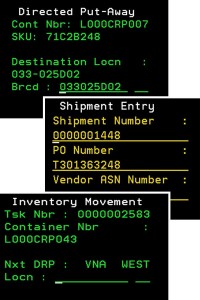Streamline Your WMS Start-Up (Pt. 3)
April 7, 2014 By: Senior Management | Topics: IT SolutionsPART 3: Planning is Key

Some WMS installations have gotten so stalled that they were eventually shelved and abandoned. This, of course, is the worst thing that can happen to an install. For whatever reason—tried to implement too much, or established unrealistic dates, or did not fund an adequate project team—too many things needed to be working right that were just not coming together to make this project go live any time soon.
Not quite so disastrous is the WMS project that goes live, but was not configured correctly, so the repair workload, tracking of problem orders and problem inventory becomes such a burden that the only solution is to add a battery of IT technicians to solve the problems. Of course, this substantially increases the cost of the project.
Then there are the WMS projects that implemented without too much delay or cost overruns, but for some reason are not delivering the expected capability or benefits.
What adversely affects WMS installs more than any other factor, however, is the expectation that an off-the-shelf WMS product can be put in with minimal modifications. In reality, these projects end up with much more modification to the software than anticipated. Usually, inadequate due diligence during the WMS selection process is the culprit here.
Companies often grew up with fixed processes in their legacy WMS that they do not want to give up. The new WMS they selected may not support these processes the way they were being performed. So, they are either forced to change the process or modify the software to allow them to continue functioning as before. The more modifications, the more risk for delay and cost overruns, and the more risk for testing and interface issues. Going this route, well over 1,000 software modifications could be expected on some projects. Once software starts to be modified this heavily there is no path to upgrades, so they get stuck with a heavily customized WMS. Five years down the line, when the company is looking at an upgrade, it is faced with having to get an entirely new WMS.
Our final post in this series will outline the specific requirements for a successful WMS installation and go-live.
We hope that you will find the insights contained in this series helpful to your business. If there is any way we can be of assistance with your WMS or information systems needs, please feel free to contact us by filling out the form below.





